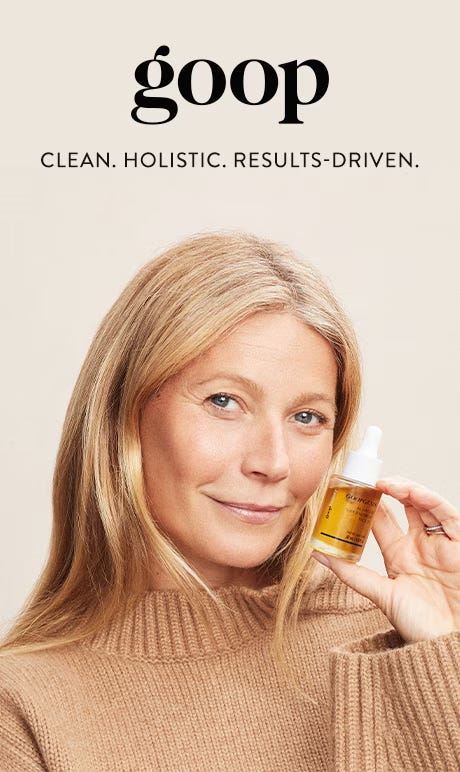50 “high-risk” Indicators of Suicide Or Suicide As a Chic Weekend Escape to Milan
If you're lying about thoughts of suicide, you're more likely to do it than your truth-telling peers. The Sequel to Suicide Is No Longer a Taboo
Enlisting AI, the support service, Crisis Text Line, compiled a list of 50 “high-risk” indicators in online messaging of a potential imminent suicide. According to this list, the pill emoji, 💊, is 4.4. times better than the word “suicide” as an indicator of an imminent act of suicide. The weeping emoji, 😭, clocks a 1.6. higher risk. Words like '“antifreeze,” “Excedrin”, “800mg,” “Ibuprofens,” “railroad” and “nightstand”(?!) are also considered red flags. Interestingly, the word “vampire” signals elevated risk also, according to CTL, as it purportedly indicates a ‘discrepancy between a distraught inner state and an apparent normal exterior.’
It is clear that the authors of the slightly distasteful click-bait study use language and draw conclusions in complete confidence the audience will agree that suicide is a bad thing. Such writing is meant for immediate consumption, to garner clicks, and tomorrow it’s gone without a trace, sucked into the massive, nihilist black hole that is our contemporary situation.
Now if we instead look at suicide as a thing of scintillating dark beauty, attesting to humanity’s attainment of sovereignty and self-determination, the language must of course be different. Take the Austrian author, Thomas Bernhard, who writes about the grandfather who educates his grandson by holding forth on the act of suicide as a feat of consummate self-mastery and beauty:
There would be no conversation, no word of instruction, which was not followed by the observation that suicide is the most valuable of human possessions: ‘At any time, whenever we want,’ said my grandfather, ‘are we free to commit suicide, even in the most aesthetic manner.’ ‘To be able to clear away, to make one’s way out of the dust,’ he said, ‘is the only truly marvelous thought’. (The Child, 1981. Author’s translation.)
Art is conjoined with freedom as Siamese twins. In a state of no freedom, you have no art. If you have art, you have freedom. The grandfather reminds us of the German word for suicide – Freitod – literally '“free death.” While Albert Camus correlates suicide and the work of art, as they are both uniquely ‘prepared within the silence of the heart.’
Suicide is a thing of beauty and the beauty is sadly vitiated and cheapened by the insufficient online language available. I mean weeping 😭, “nightstand” and 💊?! – come on – we must surely do better than that. Should the greatest human act of sovereignty and freedom – voluntary death – not reflect the awe and respect such performance of self-mastery? The lack of an adequate suicide languageis of course due to the lack of education on this subject that until recently was a taboo. There’s also the fear of getting censored by the Big Tech Positivity Enforcement. One has to be creative to avoid getting red-flagged by some AI subaltern moderator/sentinel.
But what happens when reality is impacted by our new twilight (vampire?) existence – half in, half out of Big Tech’s private online public space? In the previous installment, we saw how the taboo around suicide has been lifted. Suicide is fast entering the mainstream. To kill yourself is now on par with a Botox procedure to tighten a slack and drooping life-timeline. It is one more domain where humans would want to assert control over their lives in a confusing world with subsiding external authorities.
But this is where it gets interesting because just like the vampire and its “discrepancy between a distraught inner state and an apparent normal exterior,” we now have a discrepancy between our inner rich, multivalent lives and the means available to express the subtle emotional richness we feel around suicidal ideation.
Between 50,000 to 70,000 thoughts are said to pass through the mind every day and a lot of those are related to suicide, according to logic derived from Albert Camus’s classic essay The Sisyphus-Myth. We all think about it a lot of the time. Those who are most likely to commit suicide (again Camus), are actually those who lie to deny ever thinking about it.
With the limited online lexicon for discussing something as profound as suicide, you have to be very adept at combining and repurposing emojis and idioms to communicate a wish or a plan of action for suicide. The emojis at our disposal on corporate social media are of course carefully curated. I seek in vain a hangman emoji or something similar to communicate non-verbal darker shades of existence and contemporary despair. I ask: where is the emoji for suicide? Where is the emoji to communicate the wish for romantic love death?
The lack of suicide emojis and socially accepted nuanced language around suicide of course indicates the fact that our language is sanctioned & determined mainly by corporate Big Tech. With the policing and limiting of negative expressions, Big Tech tilts reality toward a uniform lovey-dovey, happy-pappy space like a private shopping centre or the tasteless infantilising phony holodeck that was Zuckerberg’s proposed “Metaverse.”
These are modalities that offer us precious little scope for delving into the dark side of that spectrum where we live at least half of the time and from which we draw strength and nourishment to grow and mature as humans must do.
“Vampire” as a concept, with its apparent connotation of discrepancy between a state of inner distress and outer pedestrian normalcy, might be said to be directly caused by social media’s creepy and frankly totalitarian insistence on positivity.
The sheer magnitude of current online care/health/motivational trash talk seems perverse in light of our inner states of depression and chaos that seems more truthful and attuned to our contemporary disturbing reality.
Tap the word suicide into a browser search engine and a forest of phone numbers next to exhortations like “It is ok to share your feelings,” “Help is here” and “It is not worth it.”
Surely the online cacophony of peevish school marmish all-caps entreaties, punctuated by exclamation marks and a “CALL US” have expedited the passing of many a googling suicidalist. The Big Tech assumption/dictate seems to be that people who wish to research the great question (the greatest philosophical question, according to Camus), and the pros and cons for a “free death,” are best served by taking down a phone number from a screen to call up a total stranger to either share cringy, awkward silences or the opposite: listen to a speed-talker who is too easy to dismiss in a situation of elevated anxiety and distrust as just another fake AI sentry.
Just imagine the poor sod who ‘OBEYS’ and responds to the ‘CALL US’ all-caps exhortation. The most likely scenario is a freaky conversation with a weirdly accented stranger (a 25-year-old Mormon missionary with a rectangular name tag in black graphite pinned to the suit pocket square) whose initial faint smacking sounds are sufficient to suggest a half-mutilated 6-foot Giant Sub Tuna Melt in the mind’s eye of the listener.
Certainly this is enough to push anybody over the edge with reminiscences of past grim institutional doom Zoom calls. And I imagine the poor caller will hang up to plunge slowly, then faster, free-falling into moldy dark caverns where hope never enters.
The upshot is another number on the “wrong” side of the ledger while the Helvetica-fonted ‘CALL US’ continues to haunt the top of internet search pages to routinely suck new virginal visitors into the twilight space of cruel indifference where mature self-awareness is wiped clean into the void as a matter of principle every hour on the hour.
Many lives might be/could be saved, by a more nuanced language and conceptualisations around voluntary death that draw on the full breadth of human knowledge, culture (and emotion), allowing for subtlety and weighted pros and cons. Philosophy, literature, and art have much to say on the subject. It would be a show of respect for the individual who seeks enlightenment and education on this tricky subject to contextualise suicide outside the infantilising, monomaniacal imperative to “celebrate life” by including diverse voices in philosophy, art, poetry and literature. Encouraging and facilitating broader and deeper thinking on the issue is incidentally also proof of a confident society.
From this perspective, that indicates a full life with negative and positive in equal measure, corporate Big Tech comes off as a ghoulish kidnapper who tells you to act normal while you’re walked through life with a gun to your back. You smile and follow orders because the sentries and algorithms have a similar hold over all your present and (future) friends. You’re simply forced to live life as a vampire: the fake, smiling kind.
I was raised in a religious and cultural context in the '70s and ‘80s when suicide was considered, if not a sin, smacking of hellfire, then a high-risk topic best avoided to maintain the flow of pleasant conversation.
Now that we are waking up to a reality where we all consider suicide as a possible next step and a new normal option in the scope of our pedestrian everyday life, the absence of a language around suicide is blatant.
But this is also the moment where hope, the enemy of suicide, enters the frame to bring about a collapse of the discrepancy between inner feeling and exterior expression, doing away with the vampire self. The tables are then turned: The creepy Big Tech blackmailer slinks away. You regain control over your destiny.
Life is predominantly a question of style and dignity. Ethics and politics follow from this. Foucault spoke of “bringing oneself inside oneself” and cultivating a “relationship to the self” in terms of self-mastery. In this genuinely free and unpolicied public space you get to live your singular death in style.
The next installment of this investigation into the present state of suicide will attempt to envision what this new world, liberated from Big Tech’s totalitarian “necropolitics,” would look like and we will in particular look to art for the tools and modalities to empower us to create a more balanced and real (#realcore) world.
Meanwhile feel buoyed over the prospect of a new language around suicide and your empowerment to decide for yourself when it is time to die. This is guaranteed to bring much needed diversity, new colours and flavours into the world. In the #realcore, you are undaunted by the exercise of power, unafraid of taking the reins to revel in power as long as it can last in its uncorrupted state. Power across the spectrum – with a dash of opportunism of course.
When you have exorcised the vampire and brought “yourself inside yourself” it is only a short distance to a new slay, snatched, mature version of yourself. The drip and swag is with you and you shouldn’t be surprised to see the fashion and lifestyle industries run to you for inspiration and content. They will feed off you like the sucker fish off a blue whales. And that’s ok. They’re welcome to join the party — even Goop.
It will be as it should be. They will put you in magazines and advertise your stylish suicide. Weak fashion minds will compare your suicidal stance with a chic weekend escape to Milan. So maybe the future won’t be so bad after all.
Happy New Year 🥳 💊 🎉











